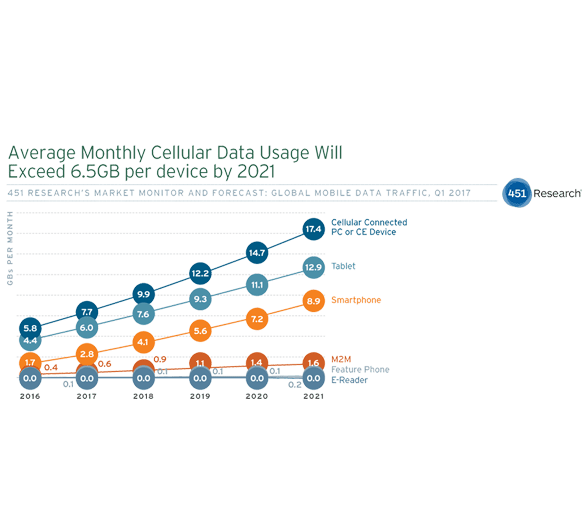Are you working stil in office?
Globally, the number of cellular connected devices will rise by a compound annual growth rate of 6% over the next five years, from 5.6 billion connections in 2016 to more than 7.5 billion by year-end 2021. Monthly data traffic from these devices, meanwhile, will rise eight times faster, from seven million terabytes per month to 48.9TB per month, at a CAGR of 47% over the forecast period.
Monthly cellular usage across connected devices – including smartphones, feature phones, tablets, PCs, connected CE devices and M2M – will grow from an average of 2.1GB per month, per device in 2016 to more than 6.5GB by year-end 2021. Smartphones will continue to carry the vast majority of cellular data traffic among connected devices, growing from 72% to 82% of all cellular traffic over the forecast period. Meanwhile, connected PCs and other consumer electronic devices will see the highest per-month usage rates, rising from 5.8GB in 2016 to more than 17GB per month, per device on average by 2021.




















